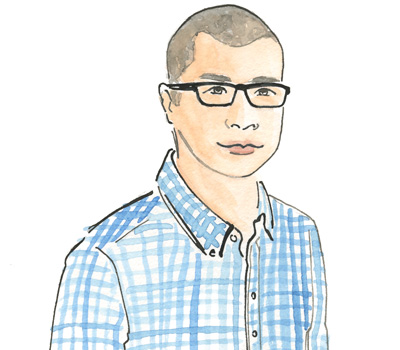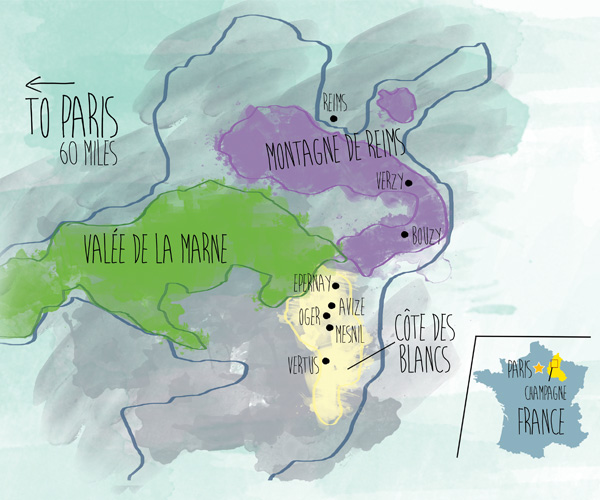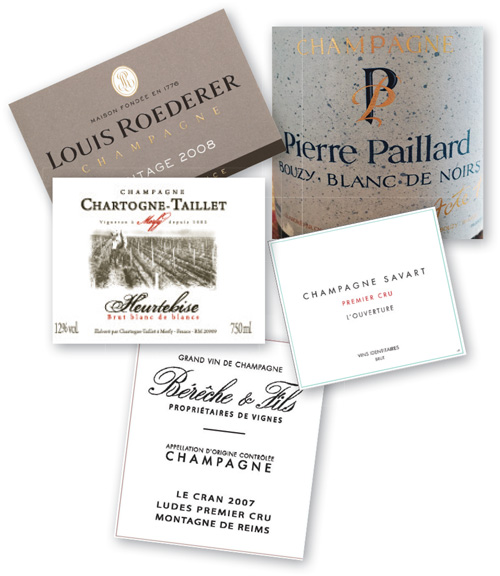Peter Liem first became interested in Champagne in the mid-1990s while working as a Burgundy specialist in a San Francisco wine shop: “The Champagnes were conveniently stocked right next to Burgundy, and at that time we were still selling wines like Krug 1979, Salon 1982 and Cristal 1985 at very reasonable prices.” On his frequent trips to Burgundy, he would often pass through Champagne on the way back, and the balance began to tip. “Champagne was in the midst of a major transformation: a new generation was getting involved in the wineries and beginning to have an impact; many winemakers were starting to focus on terroir; and an entirely new group of grower-producers was starting to emerge. I couldn’t believe there was all this incredible stuff going on and no one was writing about it!”


Now back in New York, Liem maintains his close relationship with Champagne through frequent visits, as well as the annual Fête du Champagne, an event he and Daniel Johnnes inaugurated in 2014. He is currently writing a book about the region that will be published in spring 2017.
1. Pierre Paillard Brut Blanc de Noirs Grand Cru
Covering a large area between the cities of Reims and Epernay, the Montagne de Reims is far from a homogenous terroir, says Liem. “The Montagne itself is a high plateau, in a horseshoe shape that’s open to the west, and the vineyards that lie on its flanks offer a variety of expositions. Bouzy is at the southern curve of the horseshoe and this wine comes from a vineyard called Les Maillerettes, in the middle of the Bouzy slope. Bouzy is regarded as one of the warmest terroirs in Champagne, and standing here in Les Maillerettes, you can clearly see how the south-facing exposure allows the vines to bathe in sunlight throughout the whole day. This results in ripe, fruity wines of ample body and richness, although Paillard seeks to complement this with an elegant finesse, aided by chalky soils and old vines.


2. Louis Roederer Vintage Brut
In contrast to Paillard’s Bouzy, Louis Roederer’s Vintage Brut is sourced primarily from the house’s historical north-facing vineyards in the grand cru villages of Verzenay and Verzy, on the northern curve of the horseshoe. Louis Roederer is unique among Champagne houses in that all of its vintage cuvées are made exclusively from the house’s own vines, and for the Vintage Brut, chef de cave Jean-Baptiste Lécaillon selects parcels with a high proportion of clay, which produces wines of pronounced body and richness. The northern exposure of these sites, however, results in less opulent wines than those of the southern side, since the grapes don’t ripen as readily. This wine clearly shows its northern origins in its cooler fruit tones and focused structure, yet balances this with a notable depth and complexity, thanks both to the clay soils and its partial vinification in oak casks.
3. A. Margaine Le Brut Premier Cru
Most of the vines planted in the Montagne de Reims are pinot noir, but Liem points out that there are pockets that excel at chardonnay, too. “On the eastern slopes between Verzy and Bouzy, the village of Villers-Marmery creates spectacular chardonnays that combine a chalky intensity reminiscent of the Côte des Blancs with the body typical of the eastern Montagne. Almost all of Arnaud Margaine’s 16 acres of vineyards are located in Villers-Marmery and the vast majority of them—nearly 90 percent—are chardonnay. Margaine consistently produces the finest examples of the village, and his nonvintage chardonnay-dominant Le Brut—full bodied yet graceful, and driven by the peculiarly earthy minerality of Villers-Marmery—expresses the essence of this very particular place.”


4. Bérêche Extra Brut Le Cran Premier Cru
“Moving west into the villages of Ludes, Chigny-lès-Roses and Rilly-la-Montagne, the soils become more varied, producing wines that can be more immediately accessible than those of the grand cru villages. Bérêche’s Le Cran is a blend of pinot noir and chardonnay entirely from Ludes and, while it has plenty of backbone and focus thanks to the village’s cool northerly exposure and chalky soils, it also demonstrates a fragrant complexity and alluring richness of fruit.”
5. Savart Brut L’Ouverture Premier Cru
“The area west of the main Reims-Epernay road, practically at the northwestern tip of the horseshoe, is colloquially known as the Petite Montagne, not for reasons of inferior quality, but because of its slightly lower elevation. Here the soils are even more diverse, mixing sands, gravel and fossil-rich limestones with chalk and clay. While pinot meunier thrives in much of this area, the village of Ecueil has historically been known for pinot noir, and Savart’s L’Ouverture Brut is a fine example, combining the cool precision of the north with the ripeness of the lower elevations, and a distinctive, almost marine-like minerality with a so density from the clay. Savart typically adds about fifteen percent of the taille—the second portion of the pressing—to this wine, which gives it a slightly more forward character.”
6. Chartogne-Taillet Brut Blanc de Blancs Heurtebise
This wine comes from Merfy in the Massif de St-Thierry, located north of Reims at the very edge of the Champagne region, an area that, Liem points out, has been highly regarded for its wines since the Middle Ages, though it is lesser known today. “Chartogne-Taillet is the region’s great champion, and while the estate is highly focused on pinot meunier, this chardonnay from the Heurtebise vineyard is also a superb expression of the site’s northern climate and sandy soils, showing a generous depth of fruit and a textural richness that is quite unlike anything in the Côte des Blancs.”
This story was featured in W&S Fall 2016.
illustration by Veronica Collington
This story appears in the print issue of fal 2016.
Like what you read? Subscribe today.















